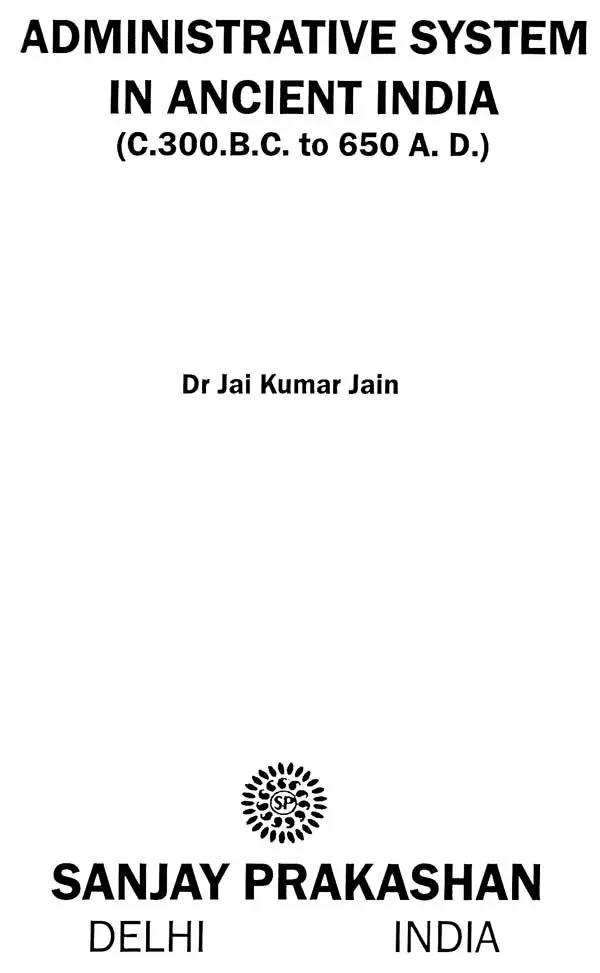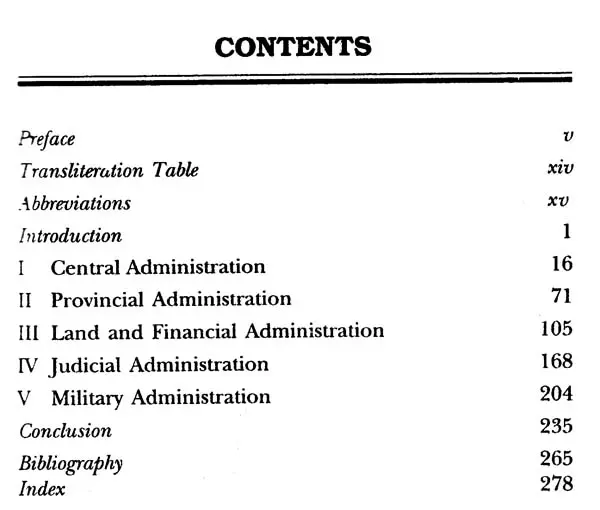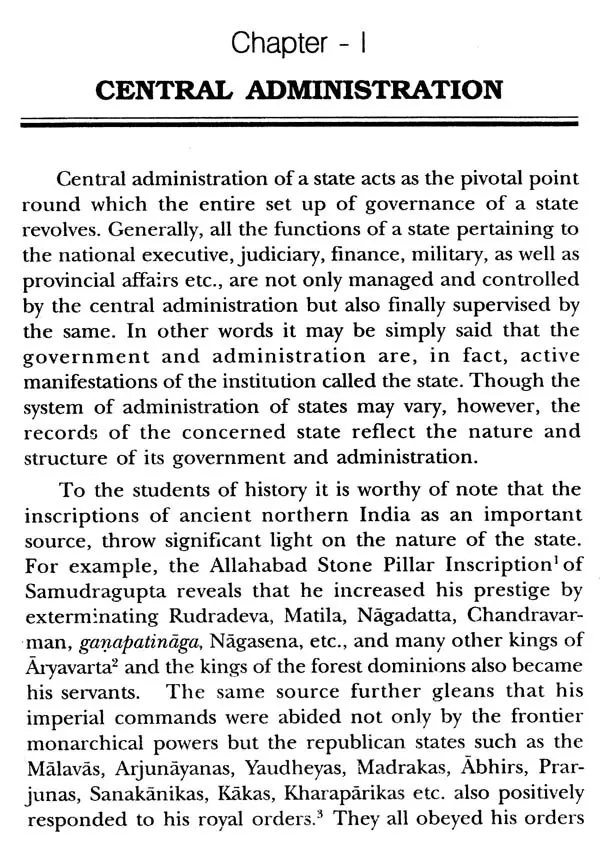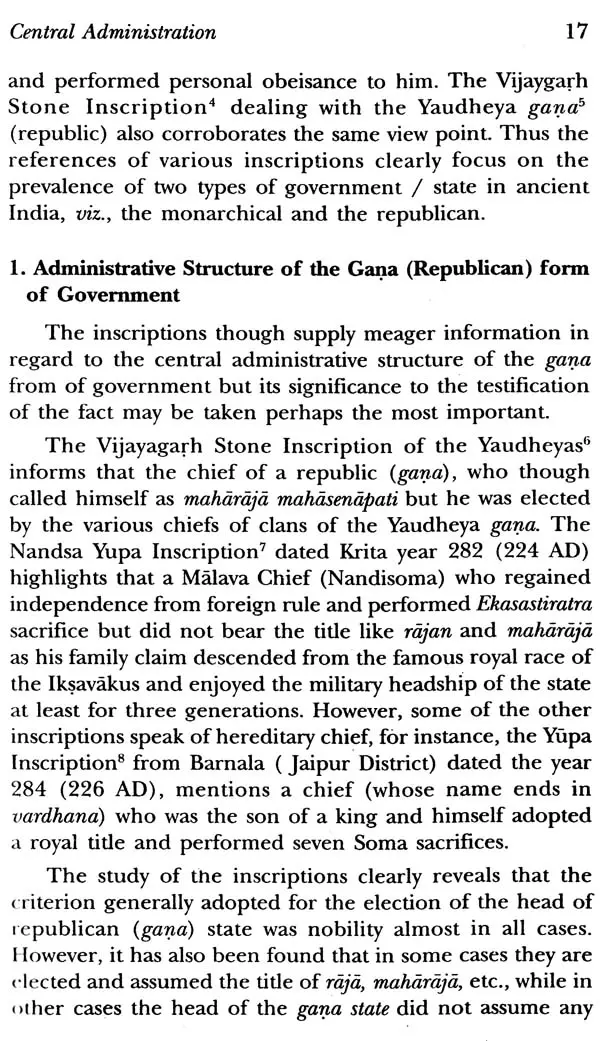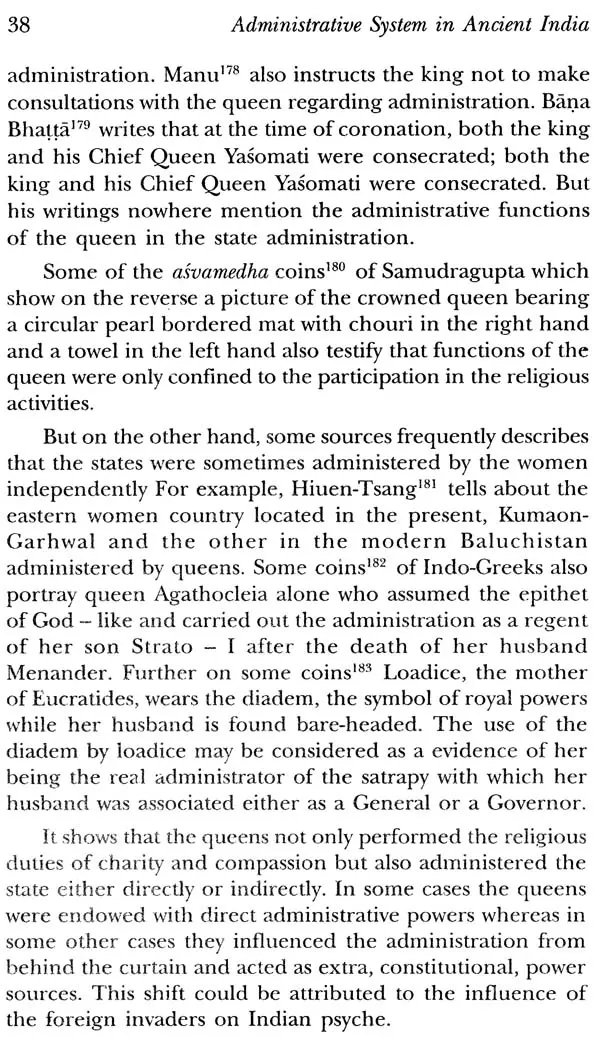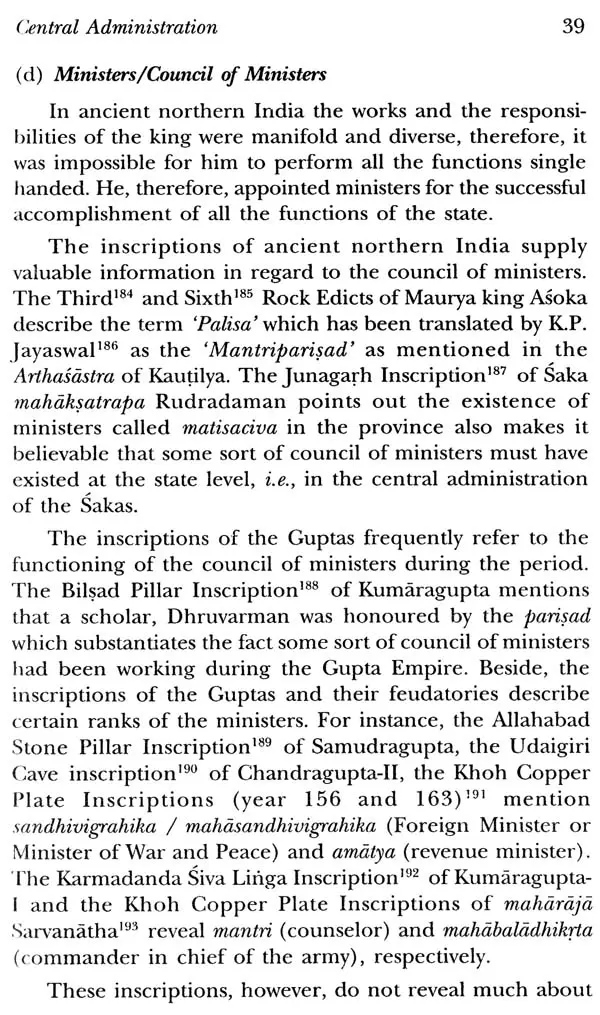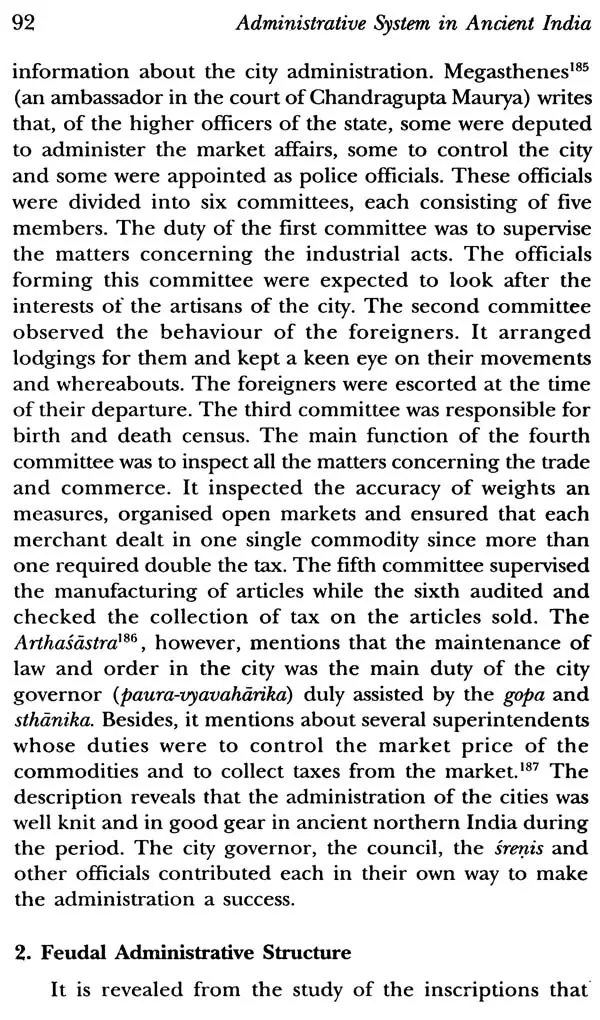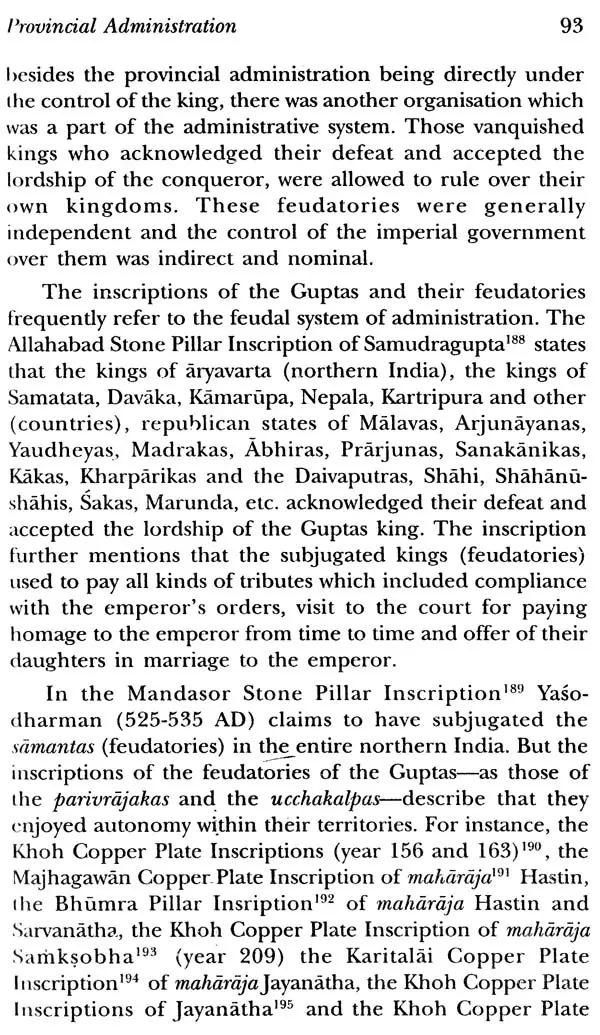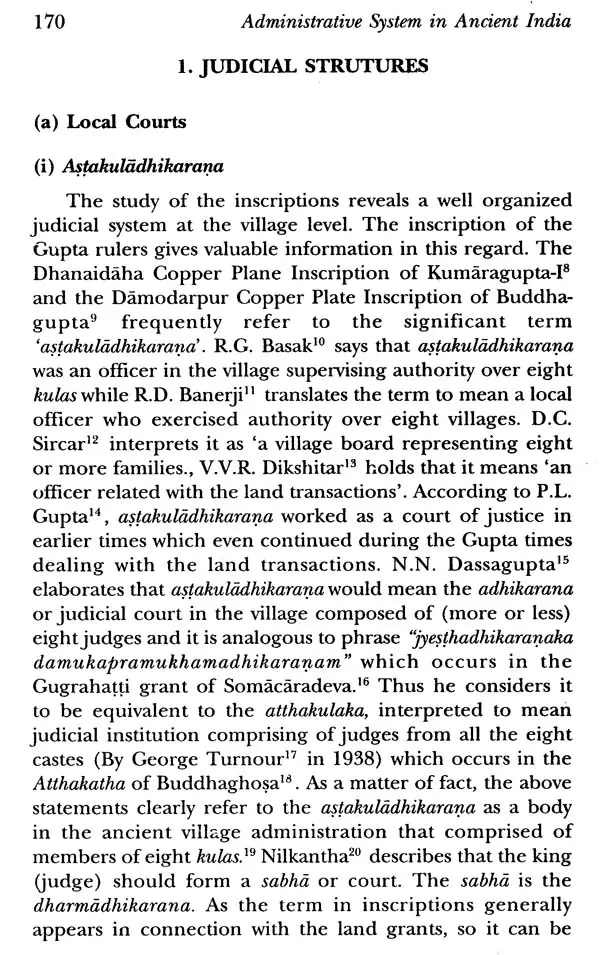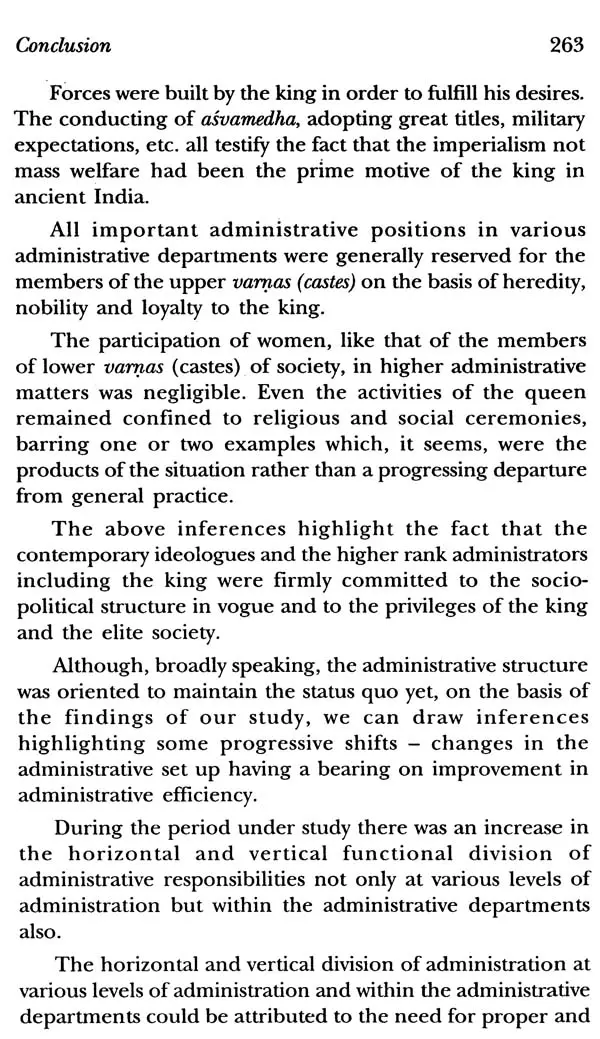About the Book The primary aim of this work has been to highlight the main features of the administrative structure in northern India during the period-c 300 B.C. to creation 650 A.D. unsing inscriptions as the main source material. The inscription are one of the most important sources of information for reconstructing the history of the administrative system in ancient India. No doubt, these inscriptions are generally donatives in Inscript character but they throw ample light. light on several aspects of administration. This apart, of make our account contemporary administrative structure/system more comprehensive and objective a liberal use of data gleaned from contemporary literature, archeological sources including coins and works of modern. scholars have also been utilized to supplement and complement and to compare and contrast the inscriptional sources.
The present work also highlights the contemporary ideologues and the higher rank administrators including the king were firmly committed to the socio-political structure in vogue to the privilege of the king and the elite society.
Although, broadly speaking, the administrative system was oriented to maintain the status quo yet there appears to be some progressive shifts and changes in the administrative setup having a bearing on improvement in responsibilities at various levels of administration and within the administrative departments could be attributed to the need for proper and efficient management of the state affairs in general and to the emergence of larger state due to imperialistic designs of the militarily powerful king in particular.
About the Author The author of this book, Dr. Jai Kumar Jain, is a senior Lecture in History in Sh. L.N. Hindu College, Rohtak. He has written a dozen of research articles about ancient Indian history which have been published in national/referral research Journals. The present book Administrative System in Ancient India c. 300 B.C. to 650 A.D. is his first book which high lights the several aspects of administration prevailing during the reign of the kings of that period irrespective of their kingdoms, big or small.
Preface In recent past, numerous scholarly works on the nature of the institutionalized administrative system of the State monarchical and republican-in ancient times have been published. All these studies are invaluable. However, history is unfathomable as historical is inexhaustible. A critical study of these works reviewed in the Introduction Hindu Polity by K.P. Jayaswal (1924), Public Administration in Ancient India by P.N. Banerjee (1916), The Political Institutions and Theories of the Hindus by B.K. Sarkar (1922), A History of Hindu Political Theory by U.N. Ghoshal (1923), The Mauryan Polity (1932) by V.R.R. Dikshitar, Sovereignty in Ancient India, by H.N. Sinha (1938), Chandragupta Maurya and His Times, by R.K. Mukherji (1943), State and Government in Ancient India, by A.S. Altekar (1949), Aspects of Political Ideas and Institutions in Ancient India by R.S. Sharma (1959), The Military System in Ancient India by B.K. Majumdar (1955), Revenue System in Post-Maurya and Gupta Times by D.N. Jha (1967), Role of the State in Ancient Indian Economy by Sarita Kumari (1986), Administrative Structure and Policy by Pattanayaka (1994), The Lichhavi Inscriptions by Dr. D.P. Verma (1994), Recent Prospective early Indian History by B. D. Chattopadhyaya, Mumbai (1995), Governance in Ancient India from Rigvedic Period to c. 650 AD., New Delhi (2000), Maurya Samrajya ka Punravalokan by Romila Thappar (tr.) Pradeep Kant Chaudhary (2007), etc., immediately brings to our notice the following two limitations :
First, in most of these studies the inscriptions have been scantly used as a source material in the reconstruction of the history of the administrative system in ancient India.
Introduction Nineteenth century British administrators/administrative historians presented their own picture of ancient India, perhaps form an imperialist point of view. James Mill, Danning, Maxmüller, Bloomfield, Willoughby, Senart and Janet etc. declared ancient India was always governed by merely theological kingdoms and the idea of nationality or state could not develop in the ancient India. But, meanwhile the nationalist school of Indian historians/ scholars such as G. S. Ojha, R. C. Dutt, R. G. Bhandarkar, R. L. Mitra, came forward in response to the Britishers scholars and vehemently refuted their views on convincingly ground that the notion of state as well as the administrative system was well developed in ancient India.
What is interesting to note in this context is the discovery of the Arthasastra of Kautilya ( in 1905) and its publication by R. Shamasastry in 1909. Being full of data regarding administrative setup of ancient India this historical text not only successfully attracted the Indian system as well as foreign scholars to work on Indian polity, but also proved as a decisive literary source of ancient Indian history. Consequently, some scholarly works came out in published forms dealing with the administrative system of Indi prevailing in the ancient India. Among such historians K.P. Jayaswal significantly wrote several articles during 1912-15 pertaining to the administrative system of India.
Book's Contents and Sample Pages
